Gaming spaces have evolved from dim corners into highly curated environments where wall color, finish, and even paint chemistry influence focus, comfort, and streaming aesthetics. Immersive matte blacks kill glare, juicy guava pinks spark friendly energy, acoustic coatings hush echoes, and glow-in-the-dark stripes light safe paths when the overhead lamps are off. By blending color psychology with new paint tech, you can zone a single room for tournaments, movie nights, and family board-game marathons without adding a single stud. The twenty ideas below translate today’s leading trends, expert tips, and DIY tricks into clear, weekend-ready projects—pick the hue that matches your play style and press start.
1. Matte Black Game Room Cave
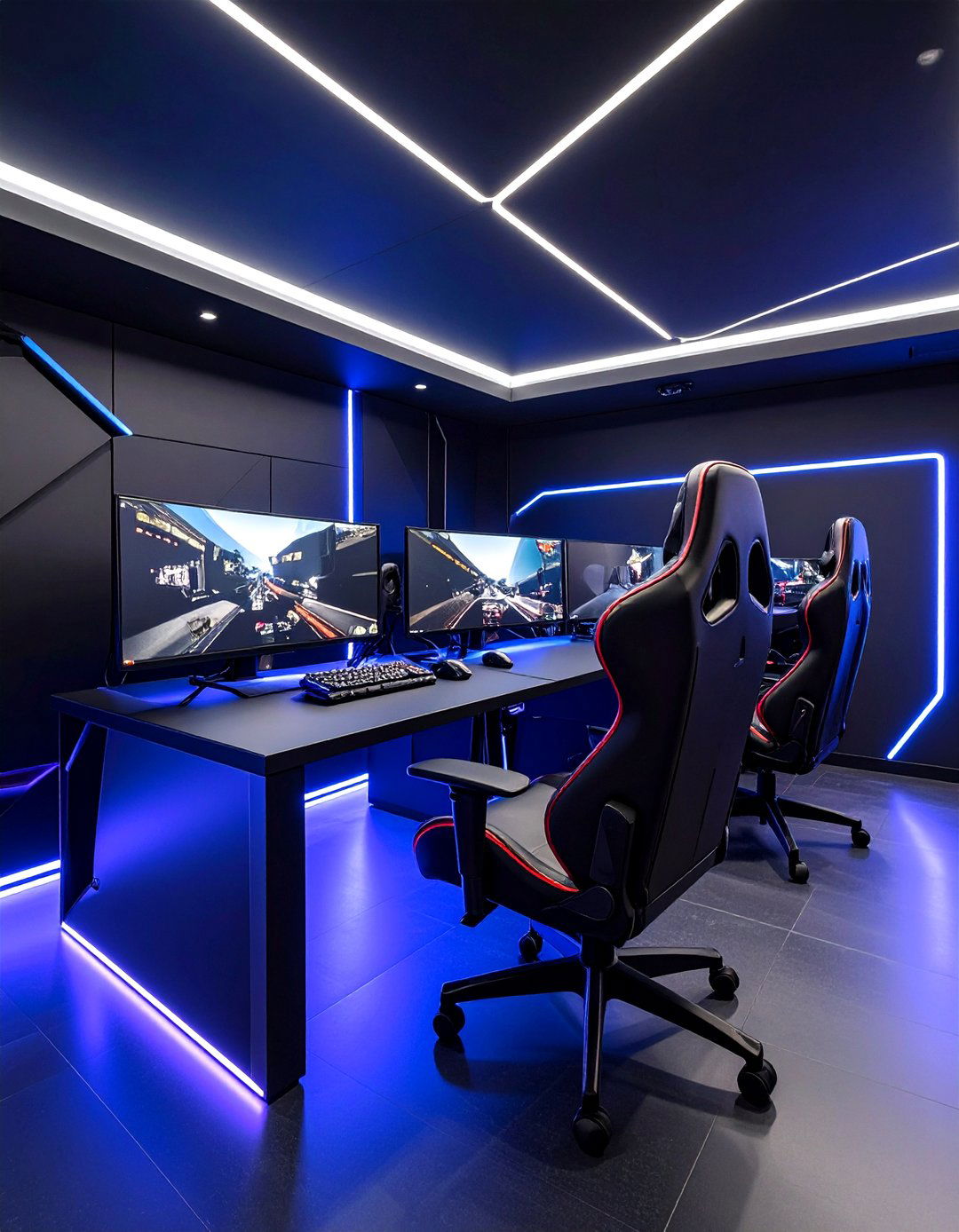
A dark, matte-black shell can transform a game room into a cockpit, erasing visual distractions while making LED strips and screens pop like portal windows. Choose a flat, low-sheen black for both ceiling and walls, then layer diffused RGB lighting behind monitors or shelving to keep eyes relaxed. Enthusiasts in sim-racing forums report that blacked-out wall sections heighten immersion by removing peripheral reference points, similar to sitting in a car’s dark cabin at night. A deep-matte surface also kills reflective hotspots, preventing glare from spoiling fast-moving graphics and preserving HDR contrast.
2. Color-Blocked Game Room Zones
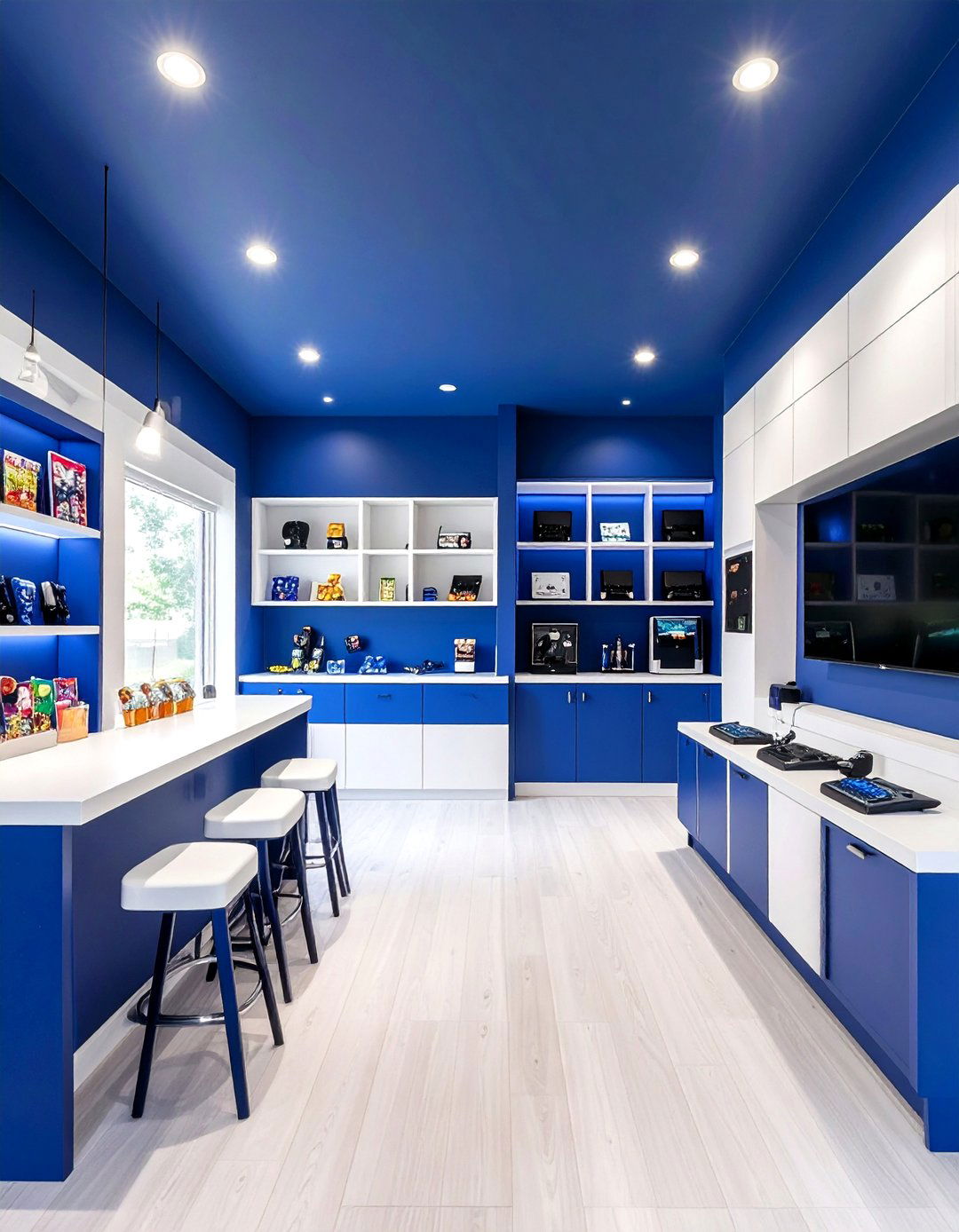
Unlike a single accent wall, bold color-blocking gives each zone of a game room a clear mission—think deep navy around the console alcove and crisp white near the snack bar. The visual segmentation keeps mixed-use basements organized without building walls, and the strong contrast photographs brilliantly for livestream backdrops. Mark crisp divisions with painter’s tape and a laser level, then roll two eggshell shades that share an undertone so the palette feels intentional rather than random. Current design round-ups list color-blocked game rooms among the fastest renter-friendly upgrades because the technique relies more on layout planning than square footage.
3. UV-Reactive Neon Glow Wall
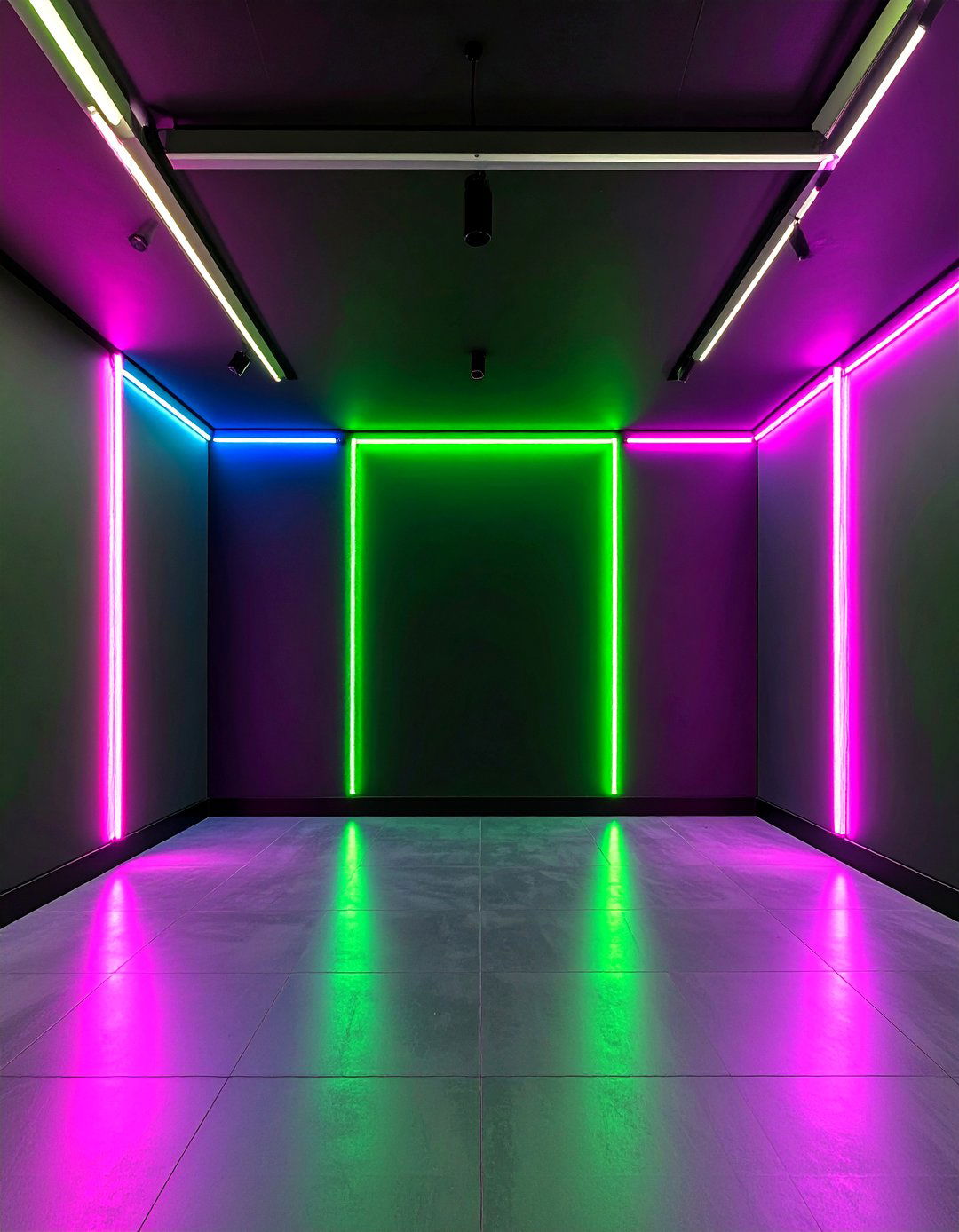
To recapture arcade adrenaline, coat one wall in blacklight-reactive neon paint and install a slim 365-nm LED bar overhead. When the lights dim, fluorescent pigments blaze into electric greens and cosmic pinks, turning routine matches into a synthwave spectacle. Purpose-made acrylic formulas stay bright for thousands of hours under UV and work with stencils or freehand murals. TikTok creators prove the effect is weekend-DIY-friendly by dabbing citrus yellow and magenta over matte black, then revealing a glowing nebula in one satisfying switch-flip.
4. Earth-Toned Social Game Room
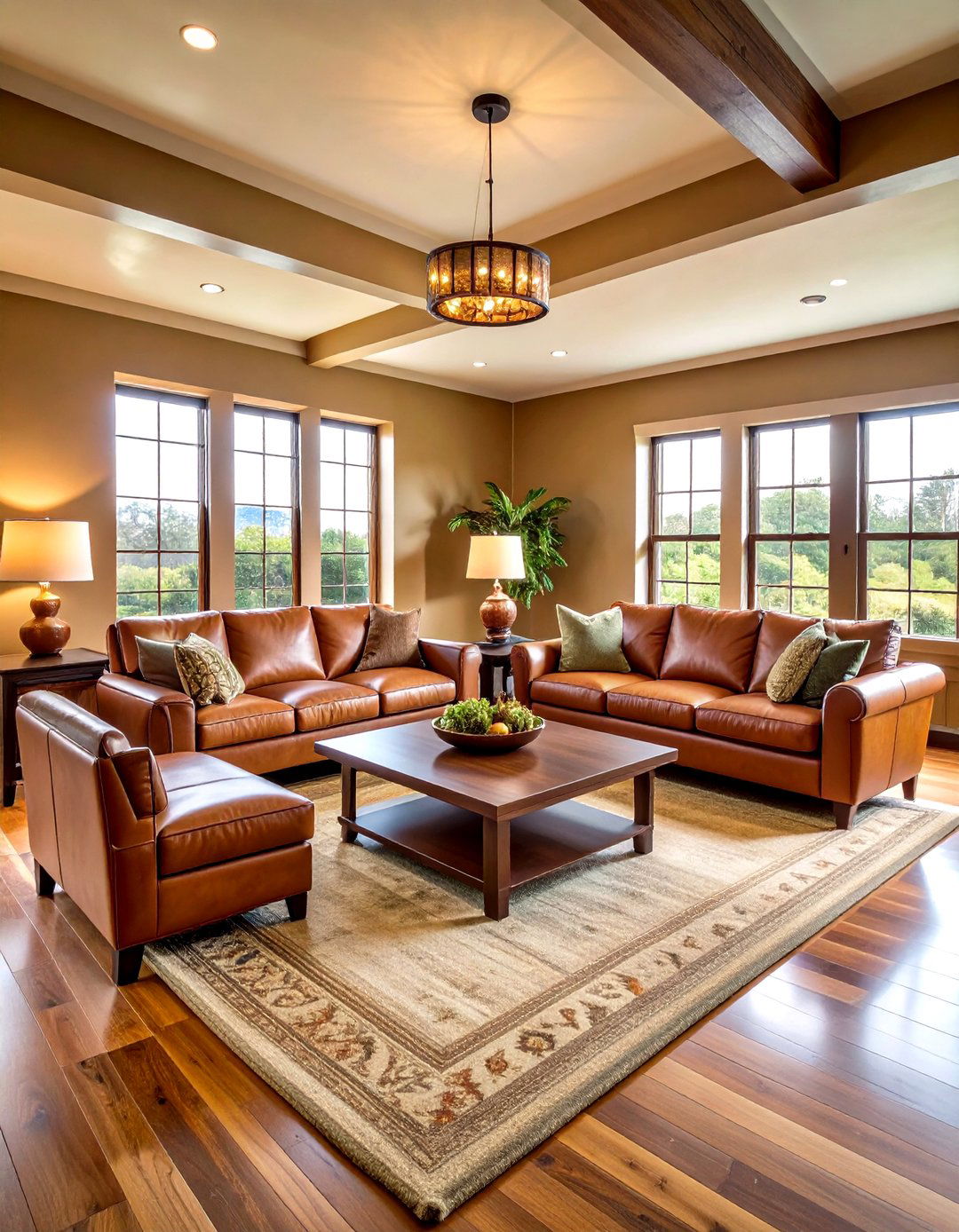
Looking for a lounge that doubles as family hangout? Warm clay reds, muted olive greens, and soft tan walls wrap a game room in an inviting, non-competitive vibe that encourages conversation between rounds. Designers favor these earth tones because they soften LED glare and pair naturally with leather sectionals or timber arcade cabinets. A satin finish keeps scuffs at bay while still absorbing enough light to preserve screen contrast, letting the space swing effortlessly from Mario Kart to movie night.
5. Acoustic Paint Quiet Power-Up
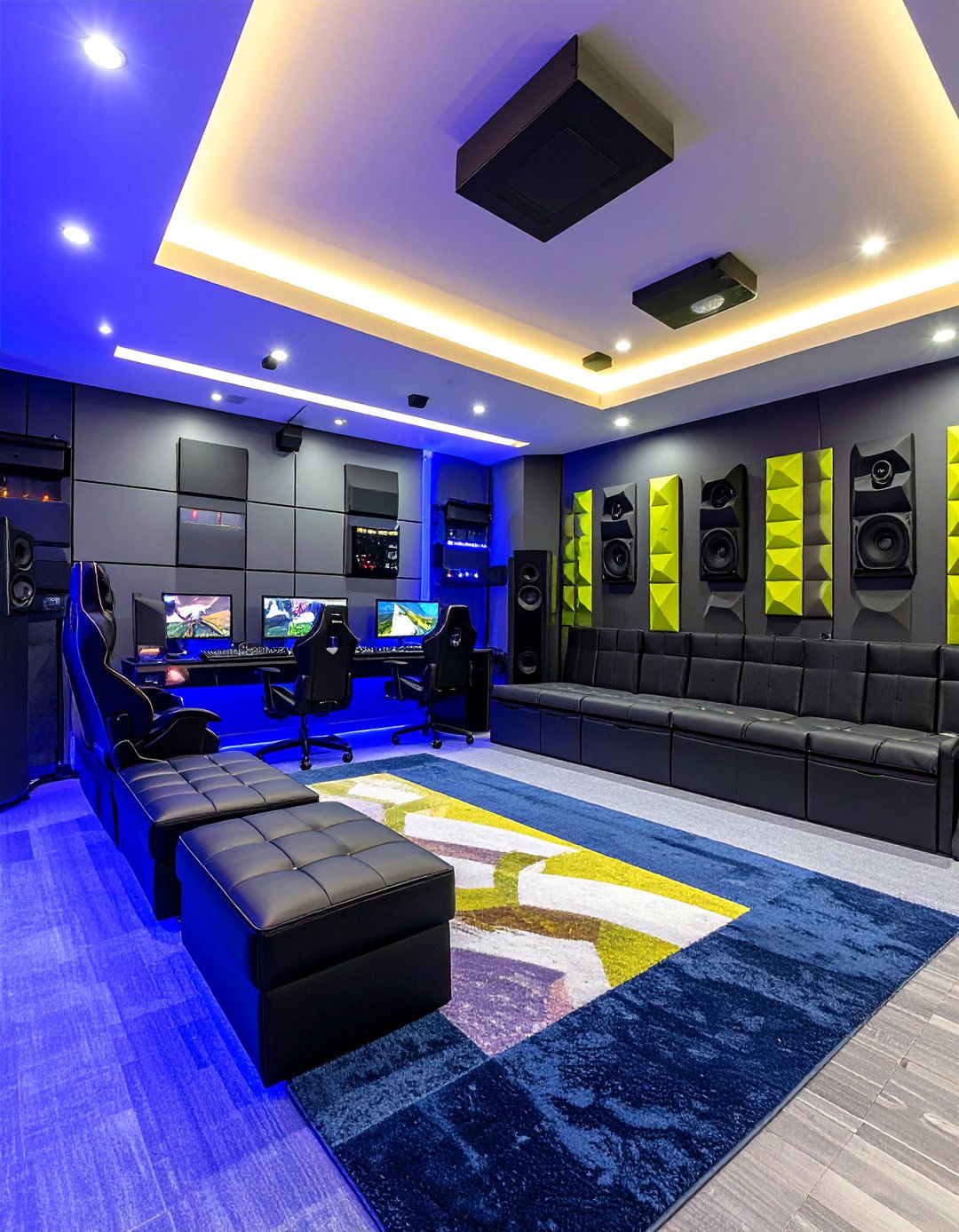
With esports callouts, thumping subs, and cheering friends, sound control matters almost as much as color. Specialized acoustic paints suspend ceramic microspheres and damping fillers in a dense acrylic, cutting mid-range echo by up to 30 percent on drywall according to lab tests. Roll on two generous coats across walls and ceiling, then add plush rugs; teammates will hear footsteps, not reverb.
6. Chalkboard Challenge Wall
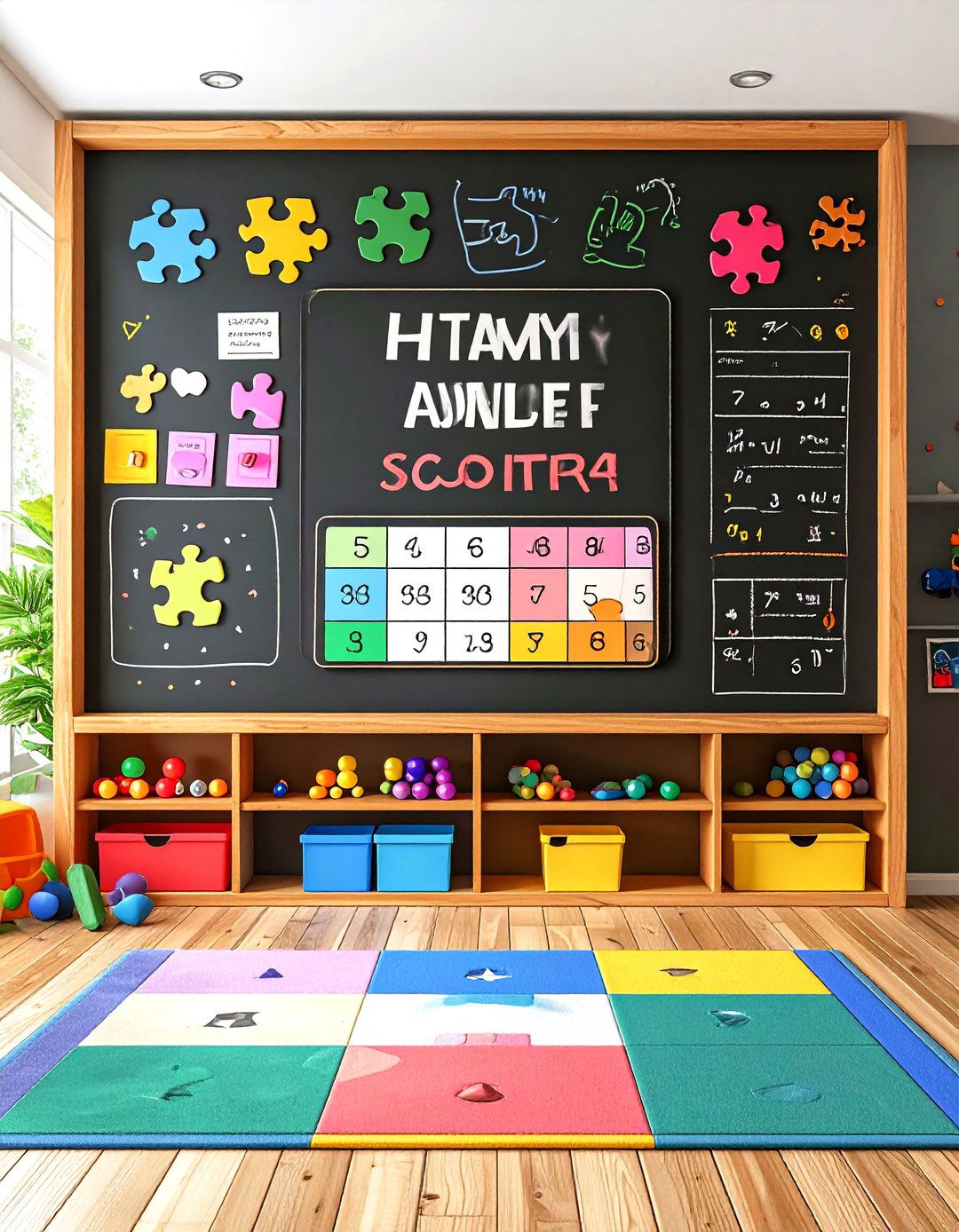
Consider dedicating one wall to matte black chalkboard paint so high-score tallies, tournament brackets, or quick sketch puzzles become living décor. Adhesive chalkboard sheets peel on like wallpaper, making the feature renter-friendly and easy to revert when leases end. Parents appreciate that the writable surface channels fidget energy into doodles instead of couch jumping, yet wipes clean with a damp cloth before guests arrive.
7. Galaxy Mural Escape
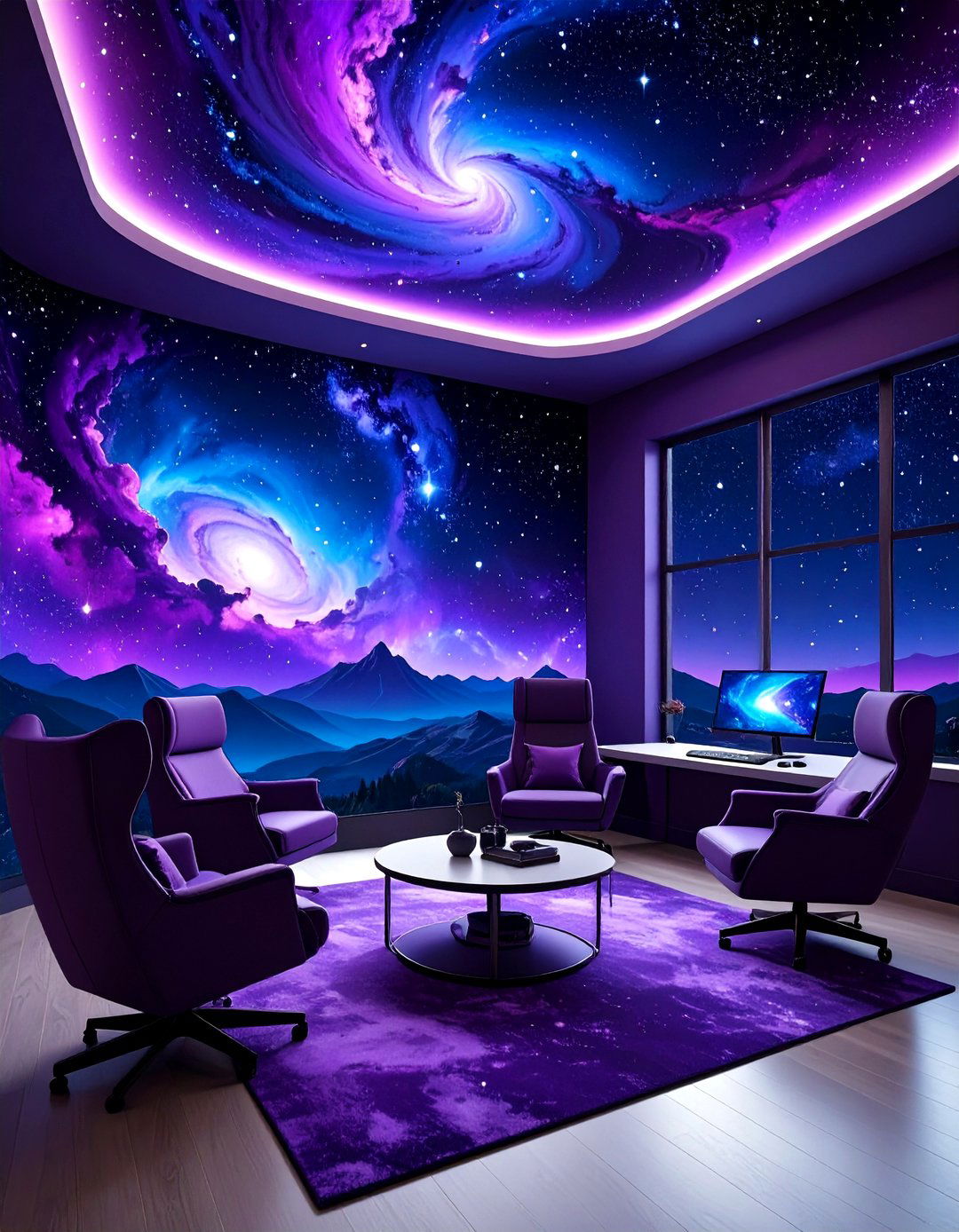
Few paint ideas amplify escapism like a sprawling galaxy mural shimmering across a game room wall. Peel-and-stick space wallpapers finish the job in an afternoon, but you can also sponge-blend deep indigo, plum, and midnight shades, then flick diluted white paint for stars. Retail murals now come in ten-foot repeats that fit behind triple-monitor battlestations without visible seams. A dimmable LED strip along the perimeter lets nebula clouds glow while center-screen colors stay true.
8. Retro Arcade Stripe Splash
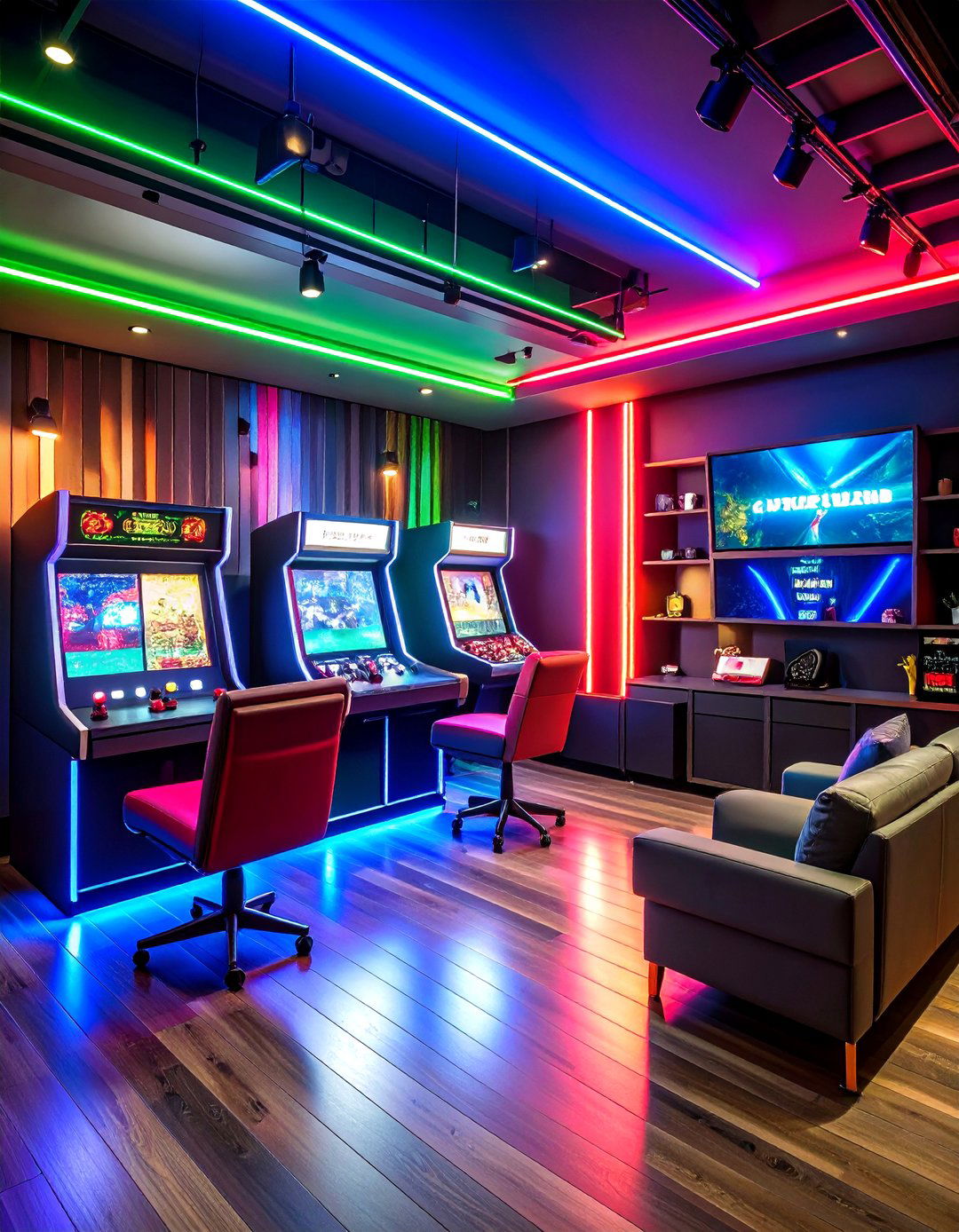
Bringing the eighties back is as simple as spraying diagonal stripes of neon blue, punchy red, and lime green across a charcoal backdrop. Interior stylists tout retro palettes as a shortcut to nostalgic energy because the hues echo vintage cabinet art. Tape off four-inch stripes at playful angles, then roll high-gloss paint so shiny color bands contrast against a matte base, reproducing that lacquered arcade-cabinet feel.
9. Futuristic Metallic Accent Panels

A brushed-silver accent wall can make a game room feel like a starship command deck. Modern water-based metallic paints contain non-tarnishing flakes that catch RGB glow and visually widen tight studios. Use a foam roller in criss-cross strokes to avoid lap marks, then stencil circuit-board lines with gunmetal for extra depth. Premium metallic collections promise durable coverage in two coats and avoid solvent fumes.
10. Pastel Chill-Out Corner

Certainly, not every session involves competitive adrenaline; soft pastel walls—powder blue, lavender mint, or peach-tinted guava—cool the mood between matches and keep daylight-filled game rooms from blowing out on webcams. Forecasters highlight guava as a trending tone that sparks gentle optimism without overwhelming small rooms. Pair the hue with white trim and diffused warm LEDs for a “cloud lounge” where card games and cozy RPG sessions feel at home.
11. Red vs Blue Duel Zone

Despite its simplicity, painting opposing walls red and blue can subtly influence player psychology: informal esports data links red with heightened aggression and blue with calm strategy. Arrange seating so competitors face their preferred tone and track whether win rates shift—a playful experiment that doubles as vibrant décor.
12. Guava Pop Gathering Spot

By embracing juicy guava—an orange-kissed pink—you create a game-room nucleus that radiates warmth during multiplayer marathons. Designers who blend wellness and décor praise the hue for activating the limbic system, triggering nostalgic joy and social openness. The color pairs effortlessly with rattan barstools, leather poufs, or neon wall art, proving cheerful doesn’t have to mean childish.
13. Glow Path Safety Stripes

Owing to clever glow-in-the-dark paints, you can guide late-night feet without flipping overhead lights. Brush a three-inch phosphorescent stripe along baseboards; the coating charges under normal bulbs and softly emits aqua light for hours. Amazon kits bundle self-priming formulas rated for repeated cleaning and deliver vibrant results. Parents have even used luminous motifs to conquer bedtime fears, showing functional paint can be emotional design.
14. Monochrome Esports Studio
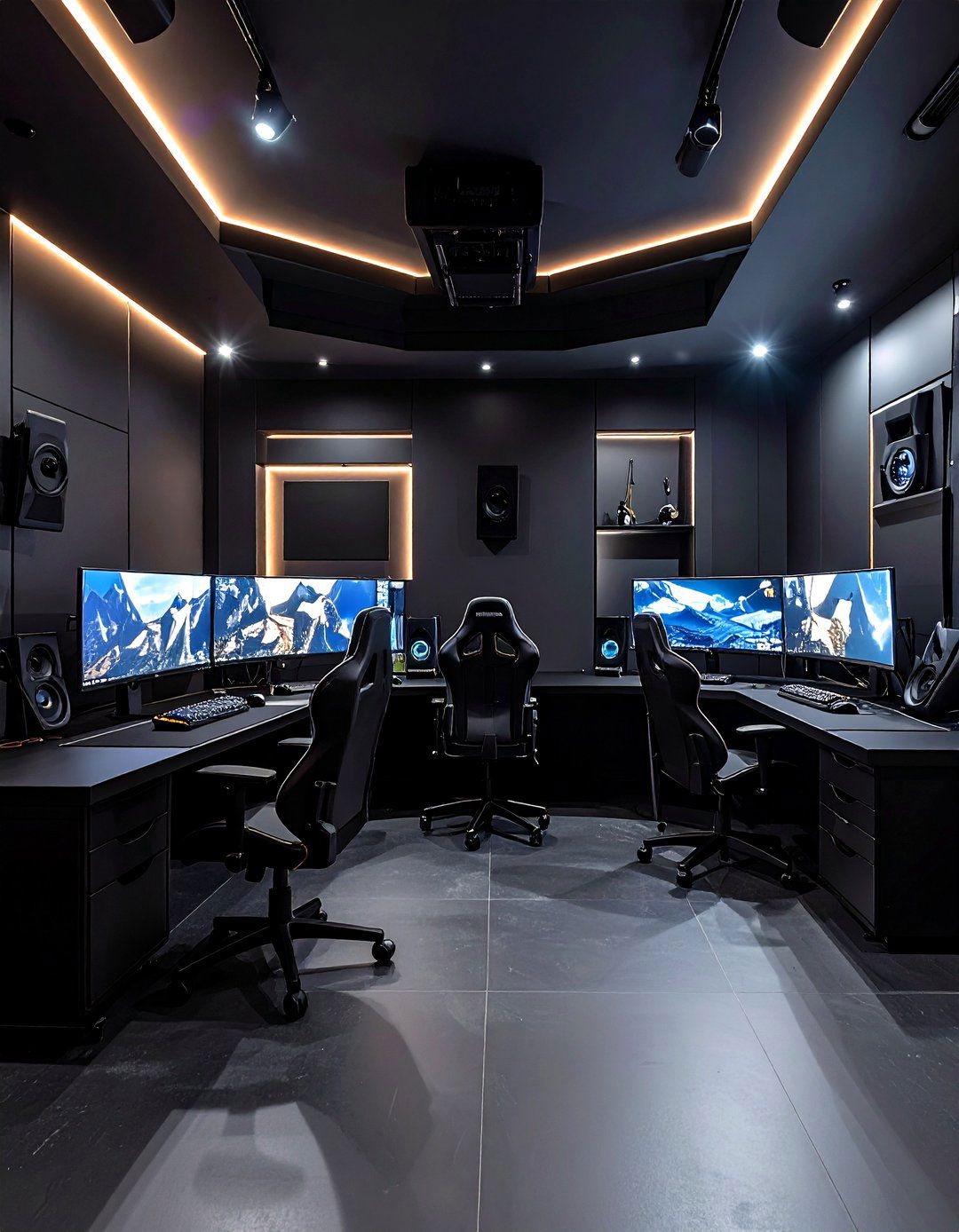
With midnight matches streamed worldwide, glare control is mission-critical; painting all surfaces a deep charcoal keeps camera exposure consistent and reflections minimal. Matte, absorptive wall paints are explicitly recommended for gaming setups because they swallow stray light and let players spot subtle on-screen details. Add adjustable key lights so faces remain crisp while the monochrome shell recedes.
15. Concrete-Look Industrial Loft
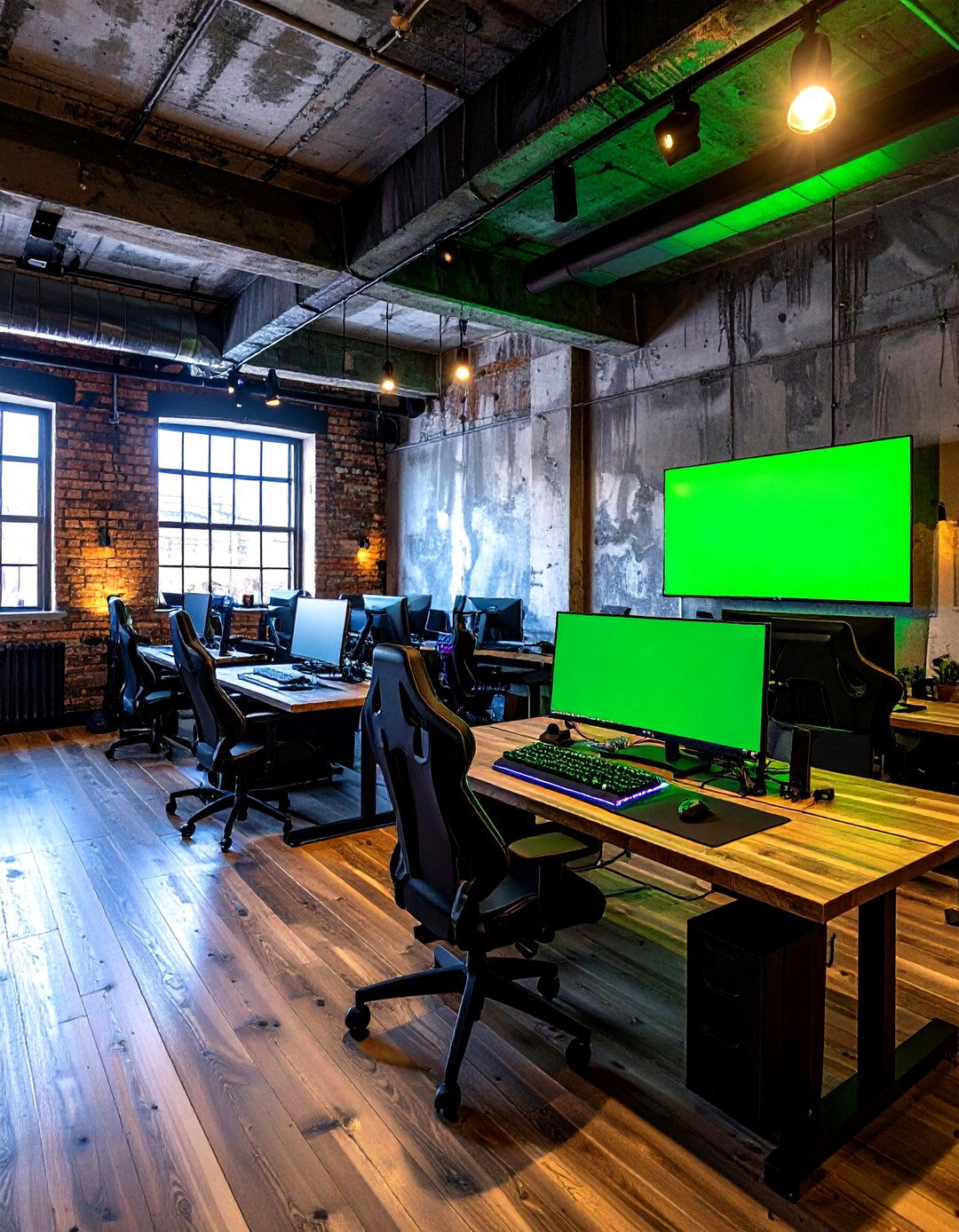
Take a cue from warehouse lofts by applying a faux-concrete paint kit; cool gray texture juxtaposes beautifully against chroma-lit keyboards and transparent PCs. Multiple glaze layers build polished-cement realism, and slight mottling hides fingerprints better than flat colors. Because the technique uses sponge trowels and water-based products, it’s a beginner-friendly project that delivers serious urban swagger without pouring real concrete.
16. Team Spirit Color Tribute
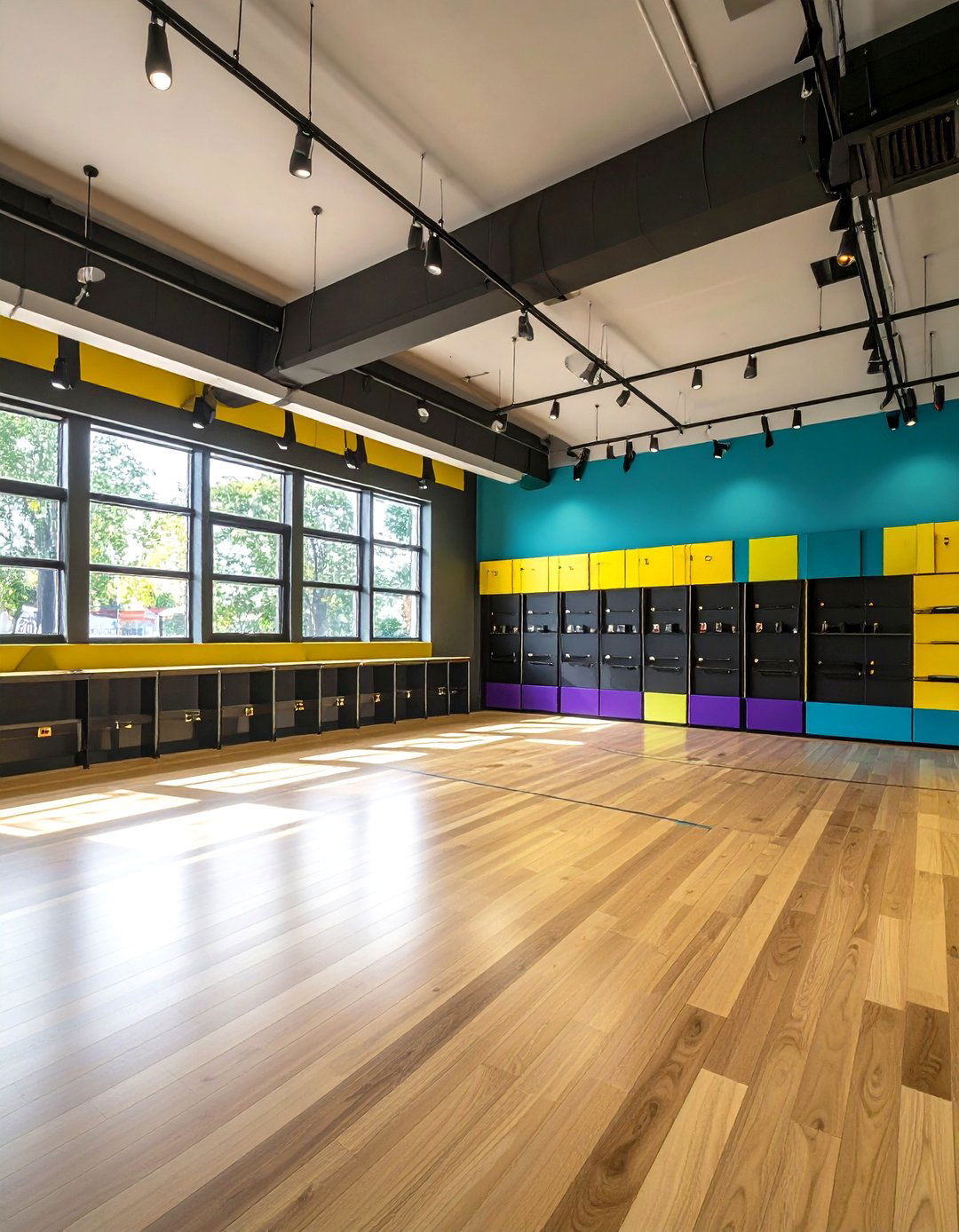
Sports gamers can let allegiance shine by matching wall stripes to a favorite franchise—think black-and-yellow racing bands or teal-and-purple basketball blocks. Scan official color codes from licensed merch for accuracy, then frame jerseys between painted segments so memorabilia looks built-in. The room becomes a personal fan stand where victory dances feel right at home.
17. Anti-Glare Matte Wall Shade
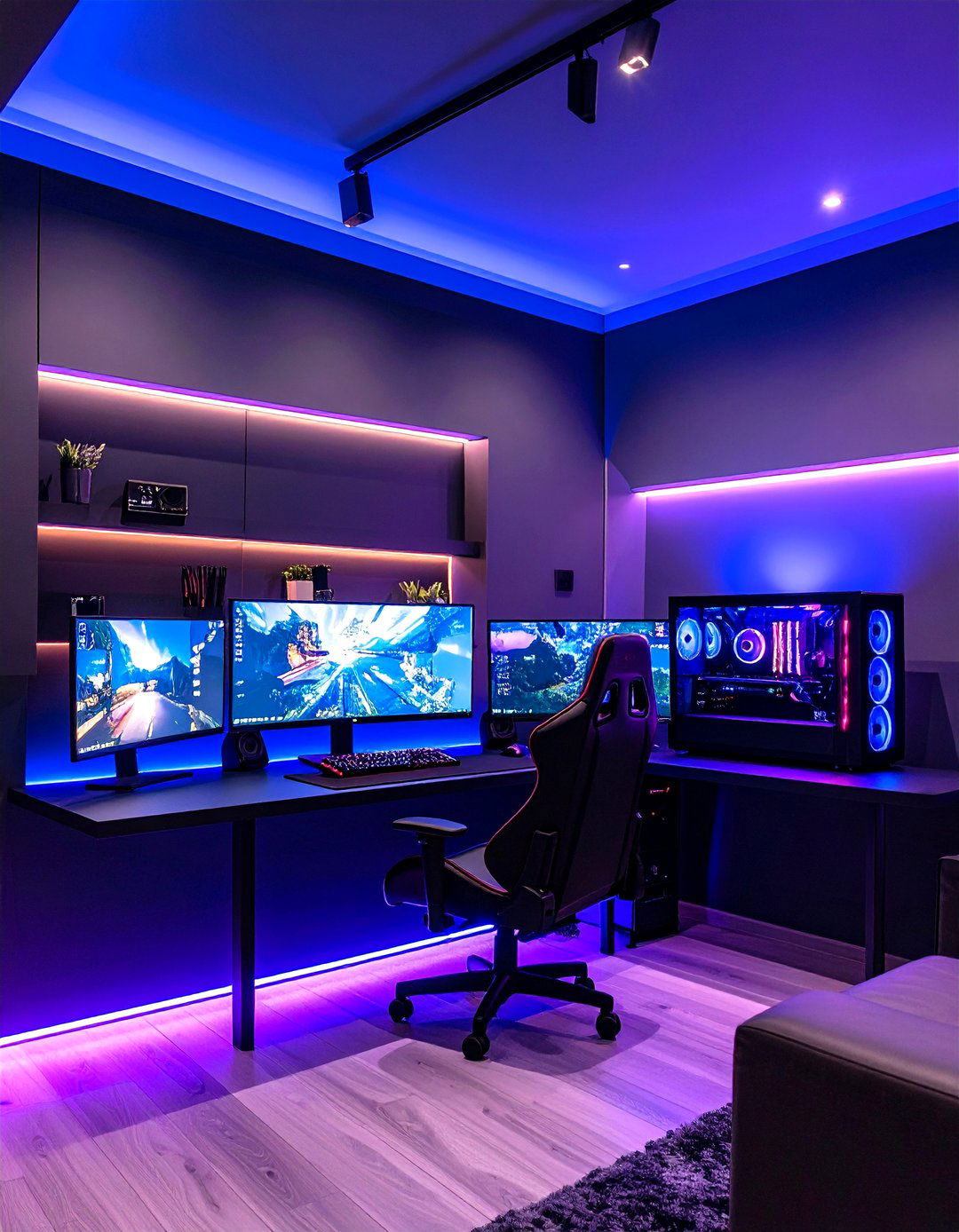
For players battling window glare, switching to ultra-matte wall paints with high absorption indexes can reclaim visibility. Tech forums note that matte finishes eliminate harsh reflections that ruin immersion or wash out HDR color. Reviews of matte-screen monitors echo the relief, underscoring how room surfaces and hardware must work together.
18. Split-Complementary Station Highlights
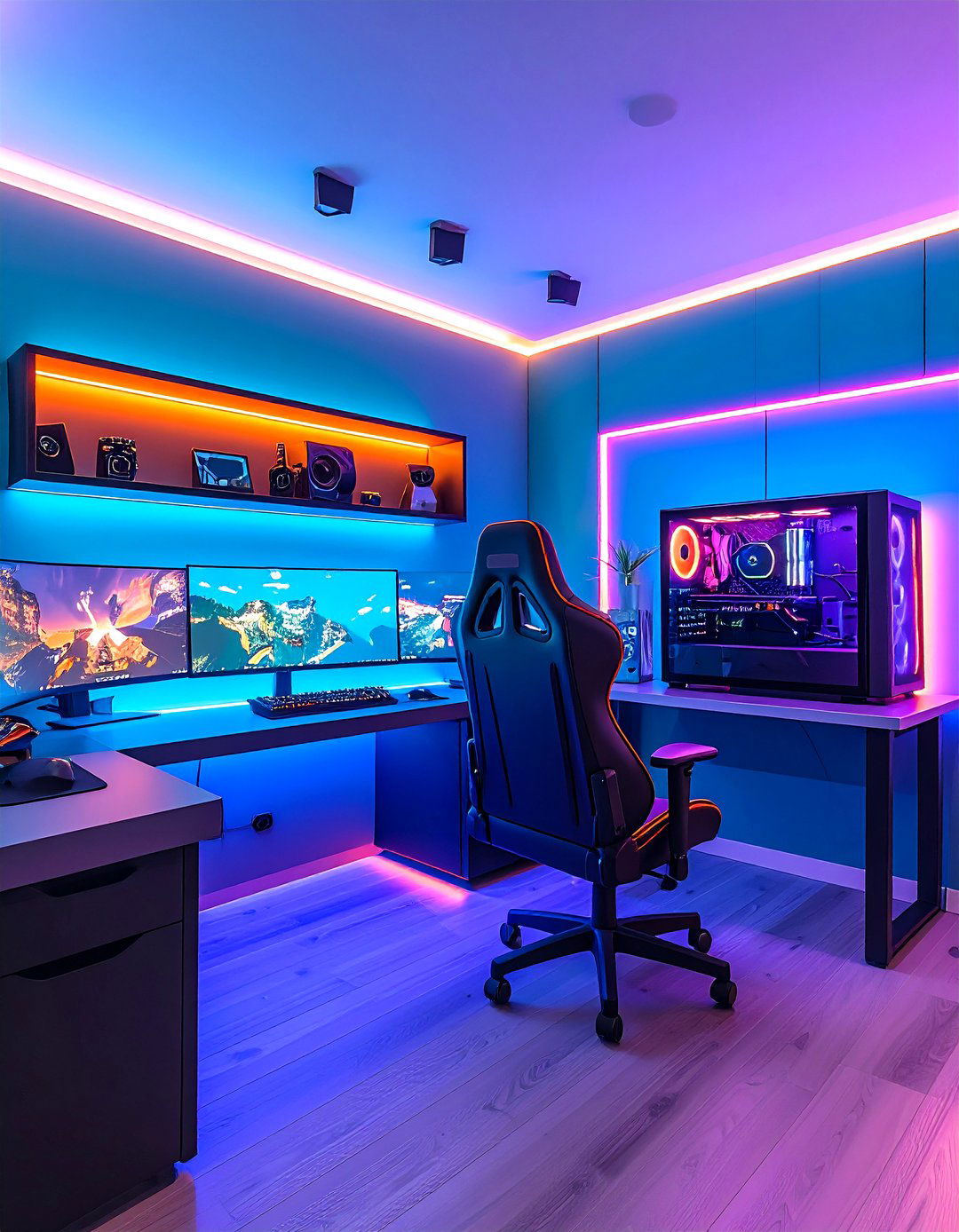
Take a designer’s cue by assigning each gaming station a split-complementary accent—teal walls around an orange-lit rig, for instance—so every build photographs cleanly without clashing. Lighting specialists explain that matching wall and LED hues enhances peripheral light for eye comfort and depth perception. Community polls add that purple remains a favorite because it’s bright yet gentle on vision, underscoring how personal taste fine-tunes any palette.
19. Cosmos Ceiling Canvas
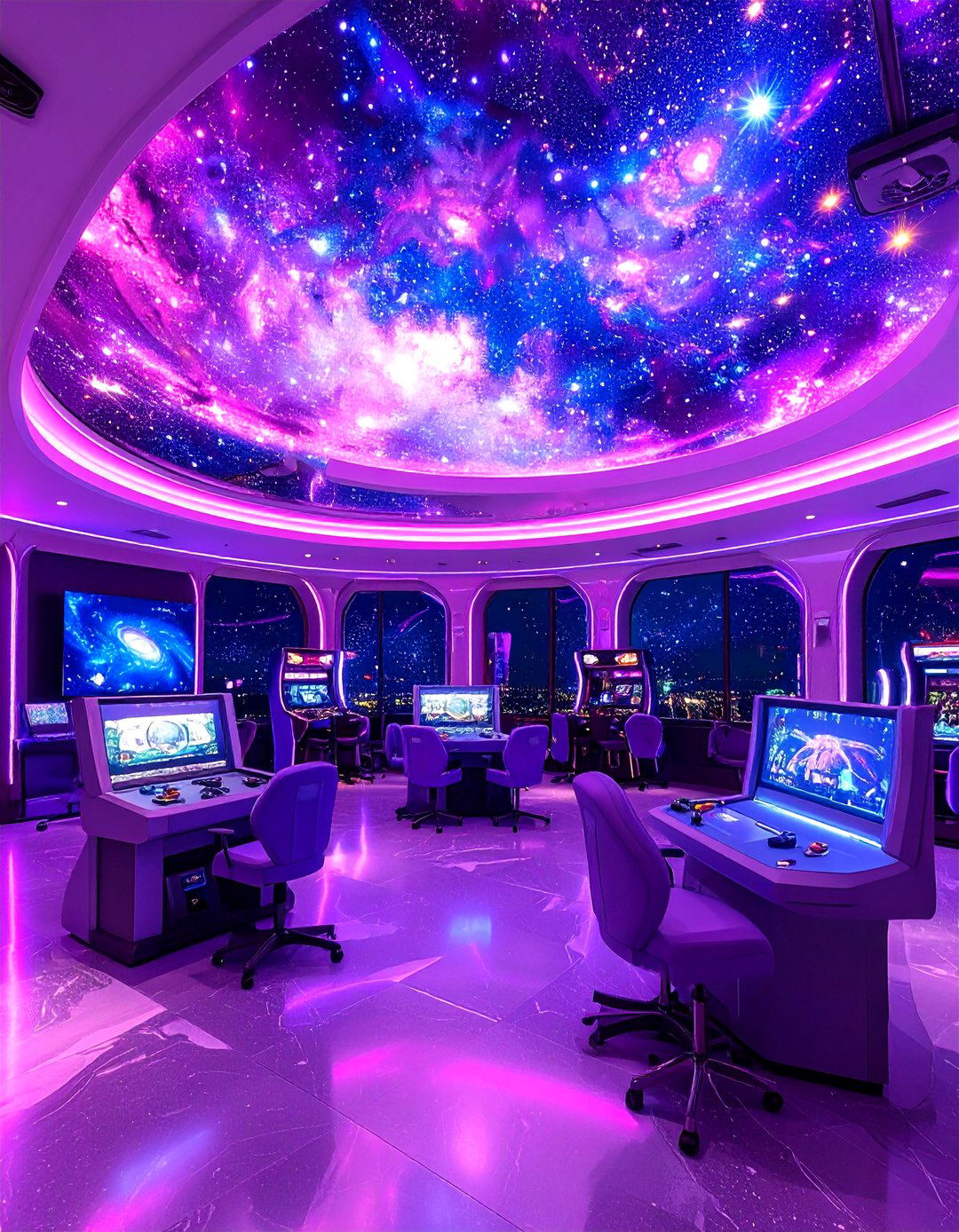
Sponge-painting swirling magentas and violets across the ceiling turns a game room into a private planetarium, especially when dotted with tiny glow stars for parallax depth. Pre-printed cosmic murals cut to standard widths simplify installation above VR zones where players often look up. Add a soothing starlight scene to smart bulbs and you may never miss a meteor shower again.
20. Soft Geometry Pastel Pattern
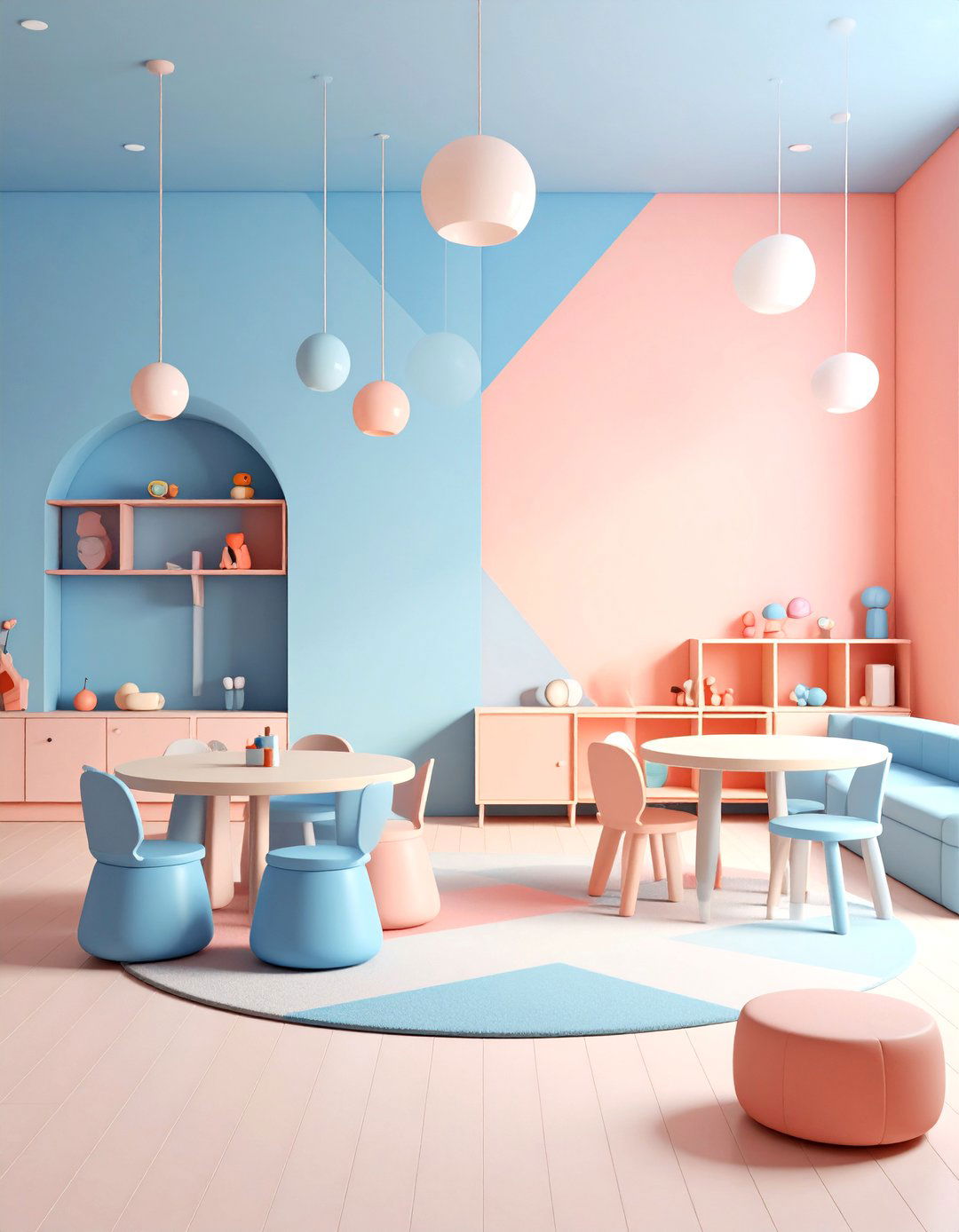
Finally, masking-tape geometric shapes—triangles, hexes, or sunrise bursts—then filling them with desaturated blues and corals creates a playful statement wall that suits both digital and tabletop gaming. The muted palette keeps focus on the action while the pattern adds streaming-friendly interest. Seal with a washable matte varnish so dice scuffs and soda splashes wipe off without dulling the subtle hues.
Conclusion:
Wall color sets the emotional soundtrack for a game room, whether you crave adrenaline-pumping neon, cave-like focus, or an earthy family lounge. By mixing finish technology with purposeful color psychology—matte blacks to erase glare, acoustic coats to hush echoes, guava pinks to spark hospitality—you control light, sound, and mood long before the first controller vibrates. Test a patch, load the roller, and let your paint choice be the opening move that levels up the entire arena.


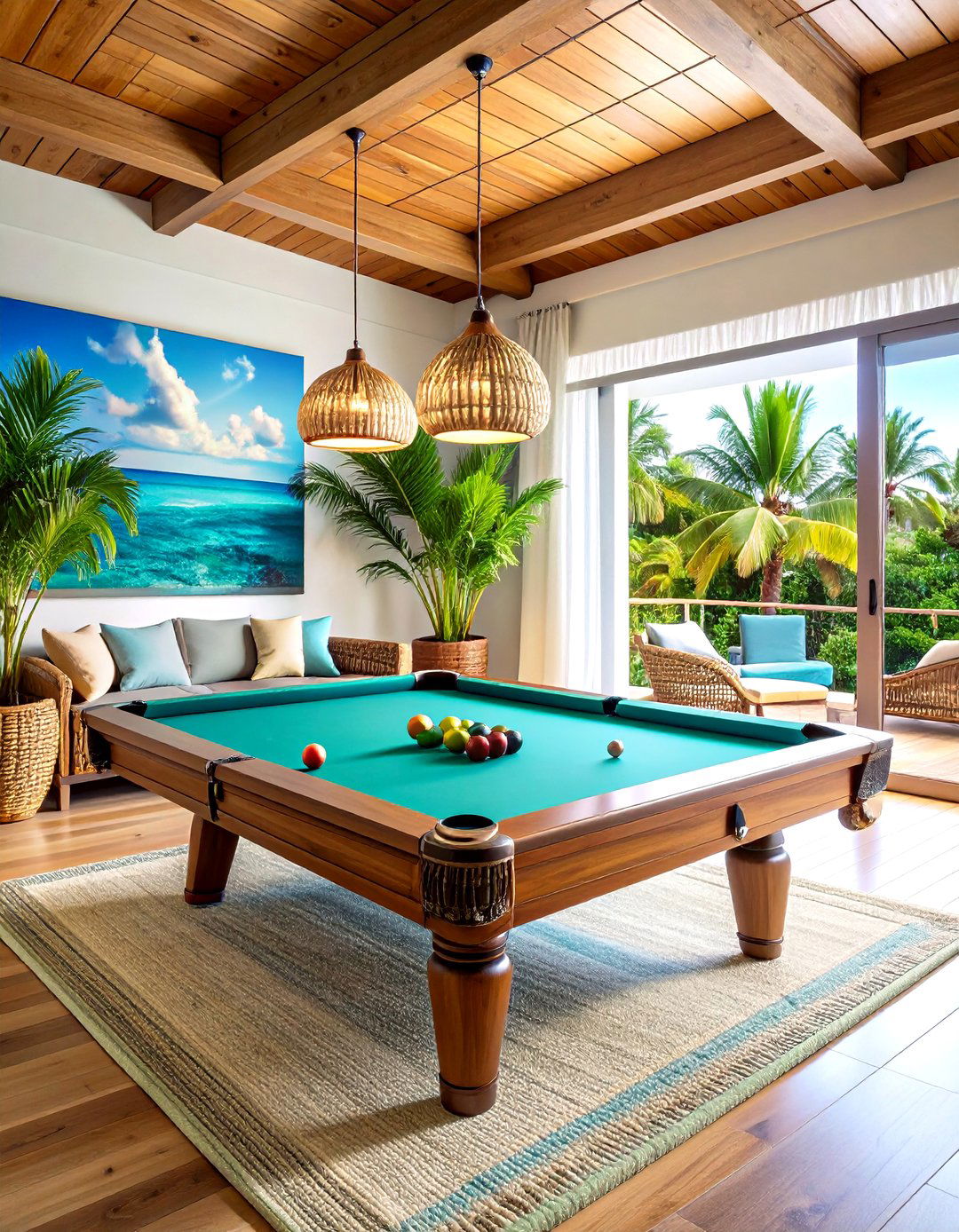
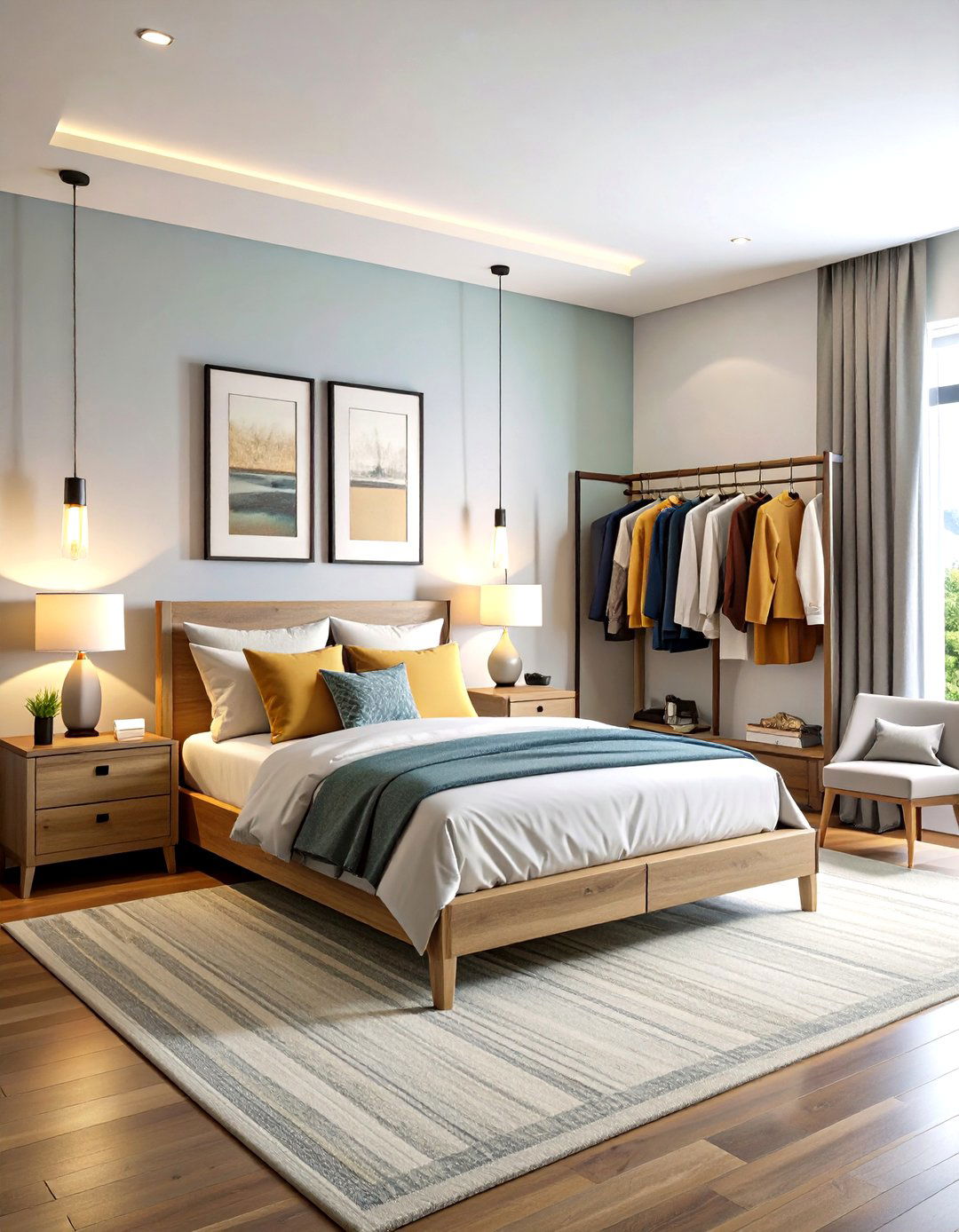
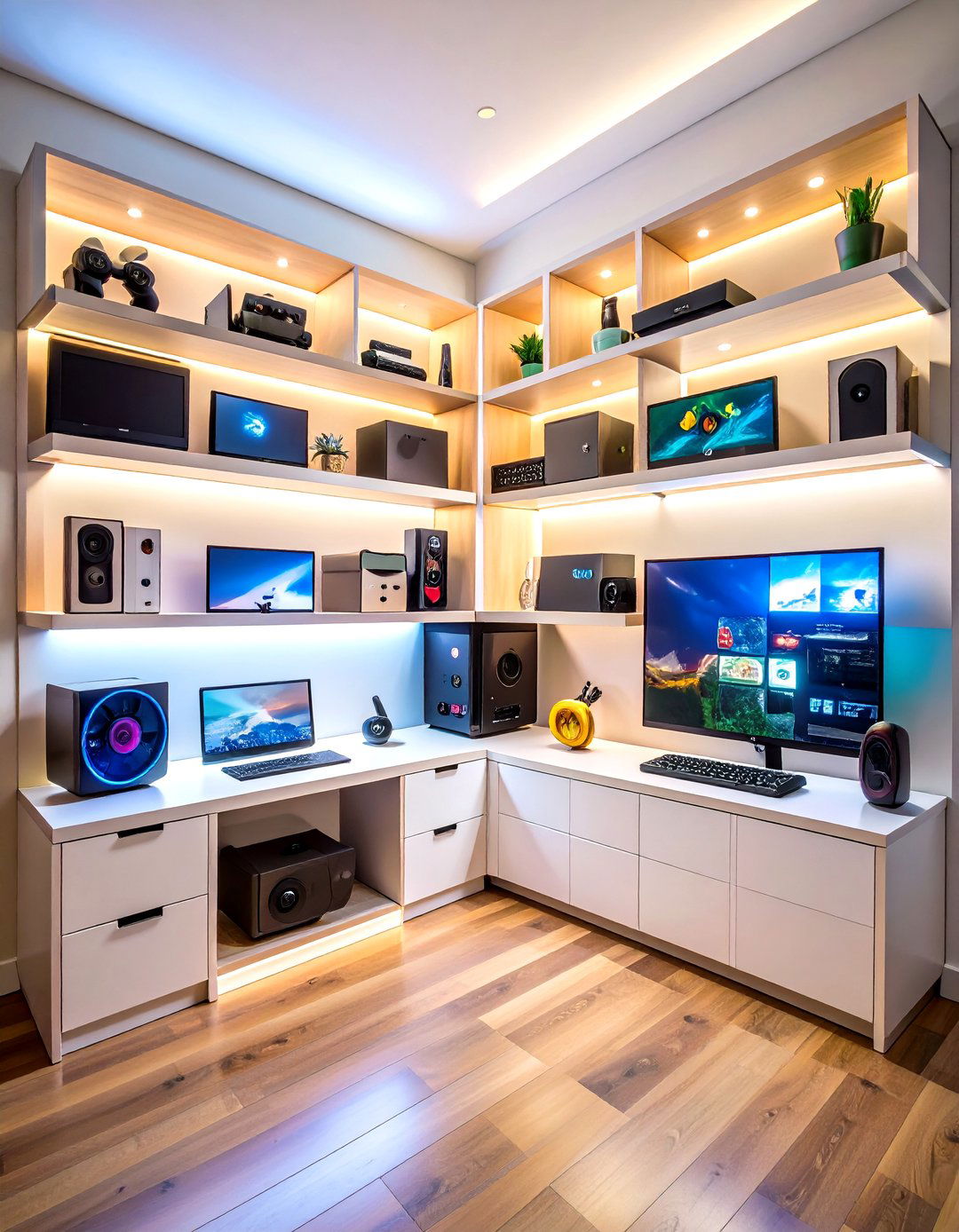
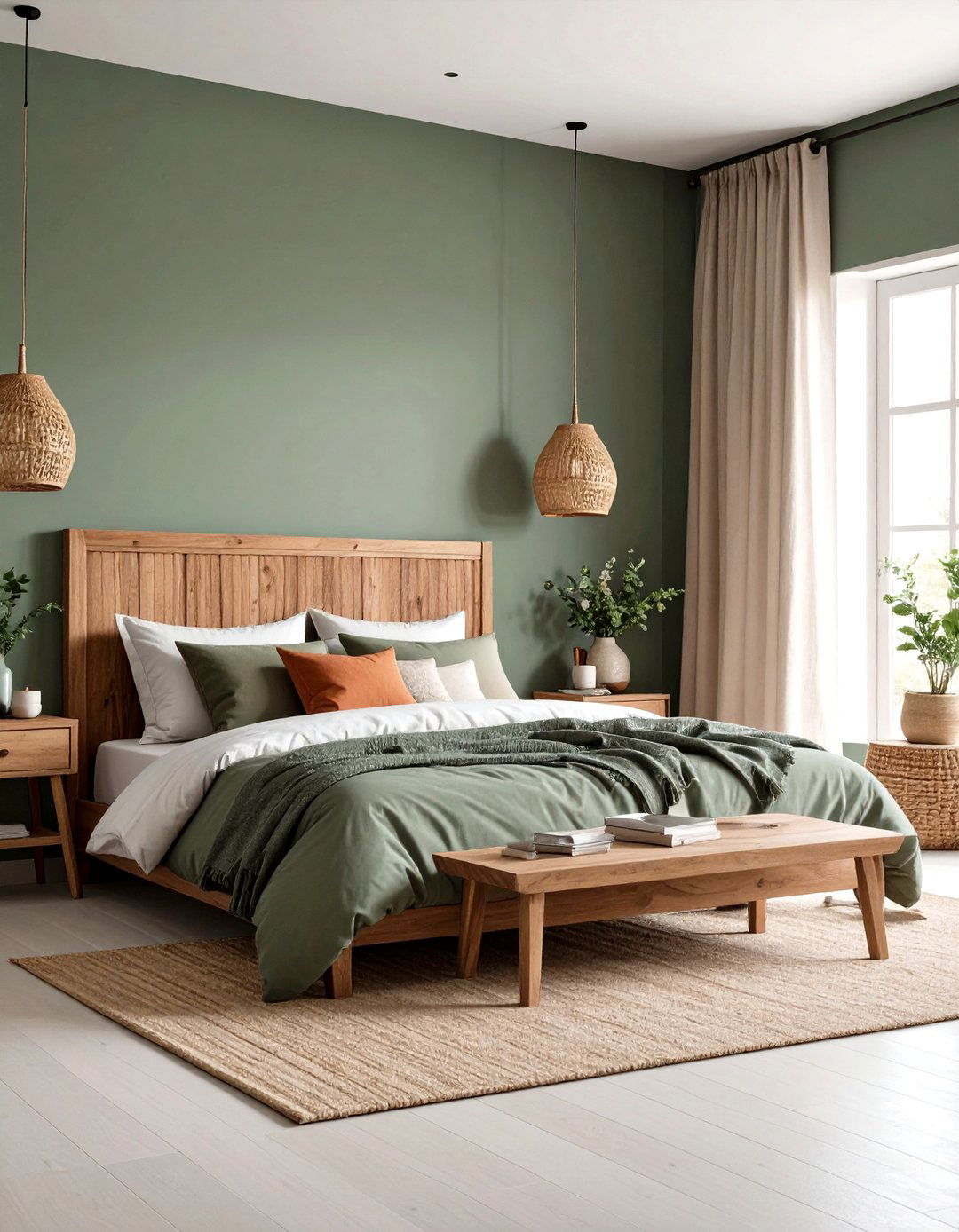


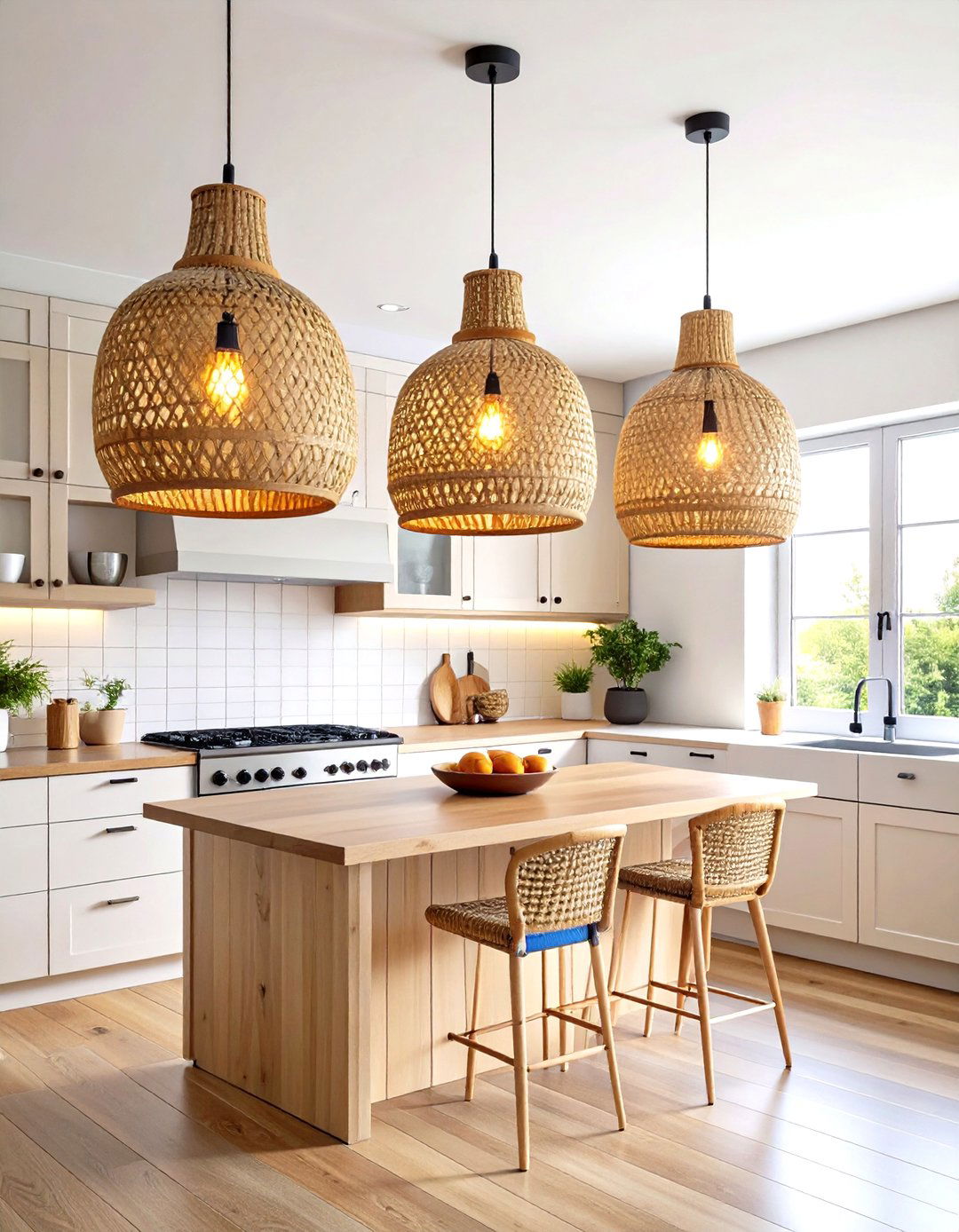
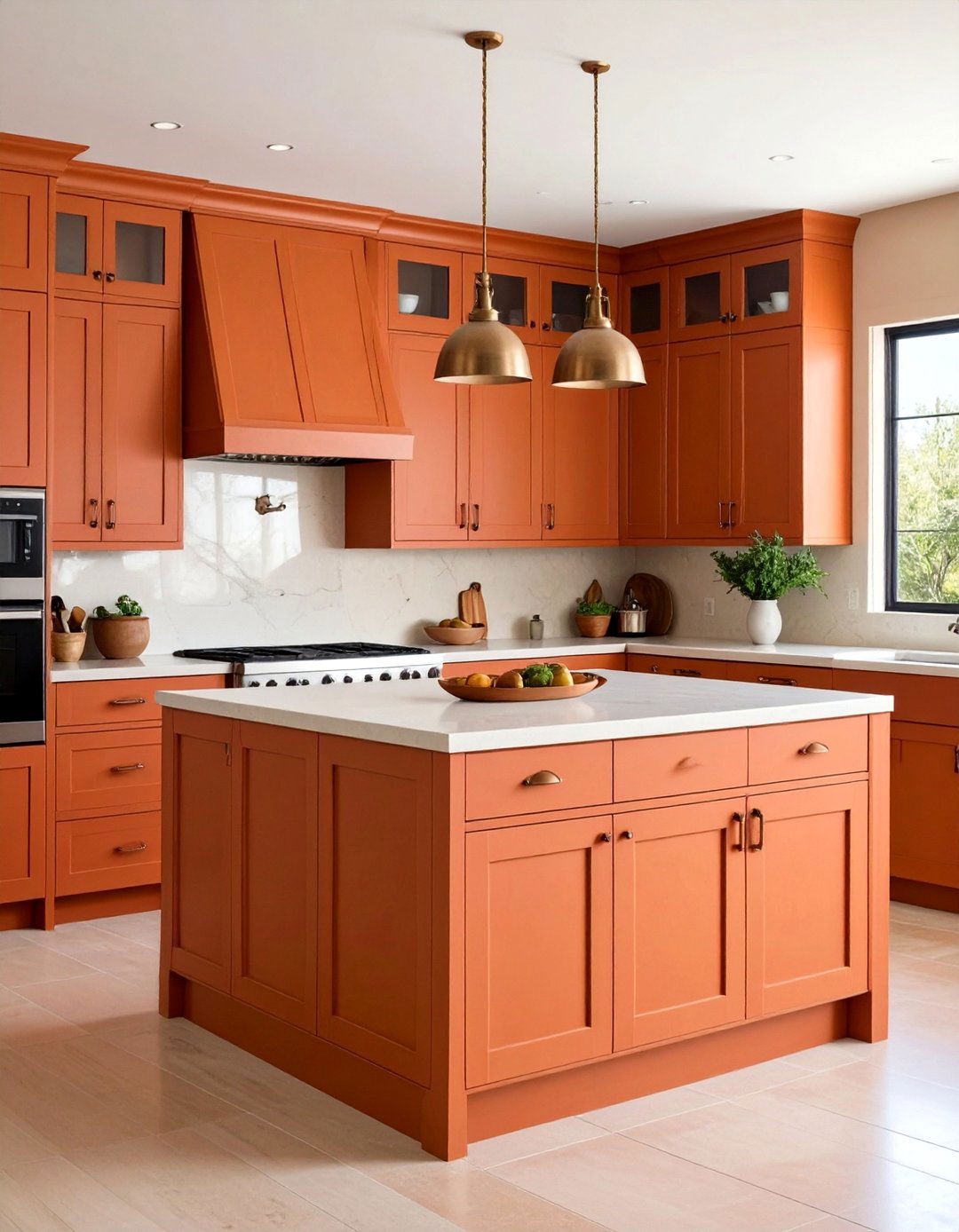
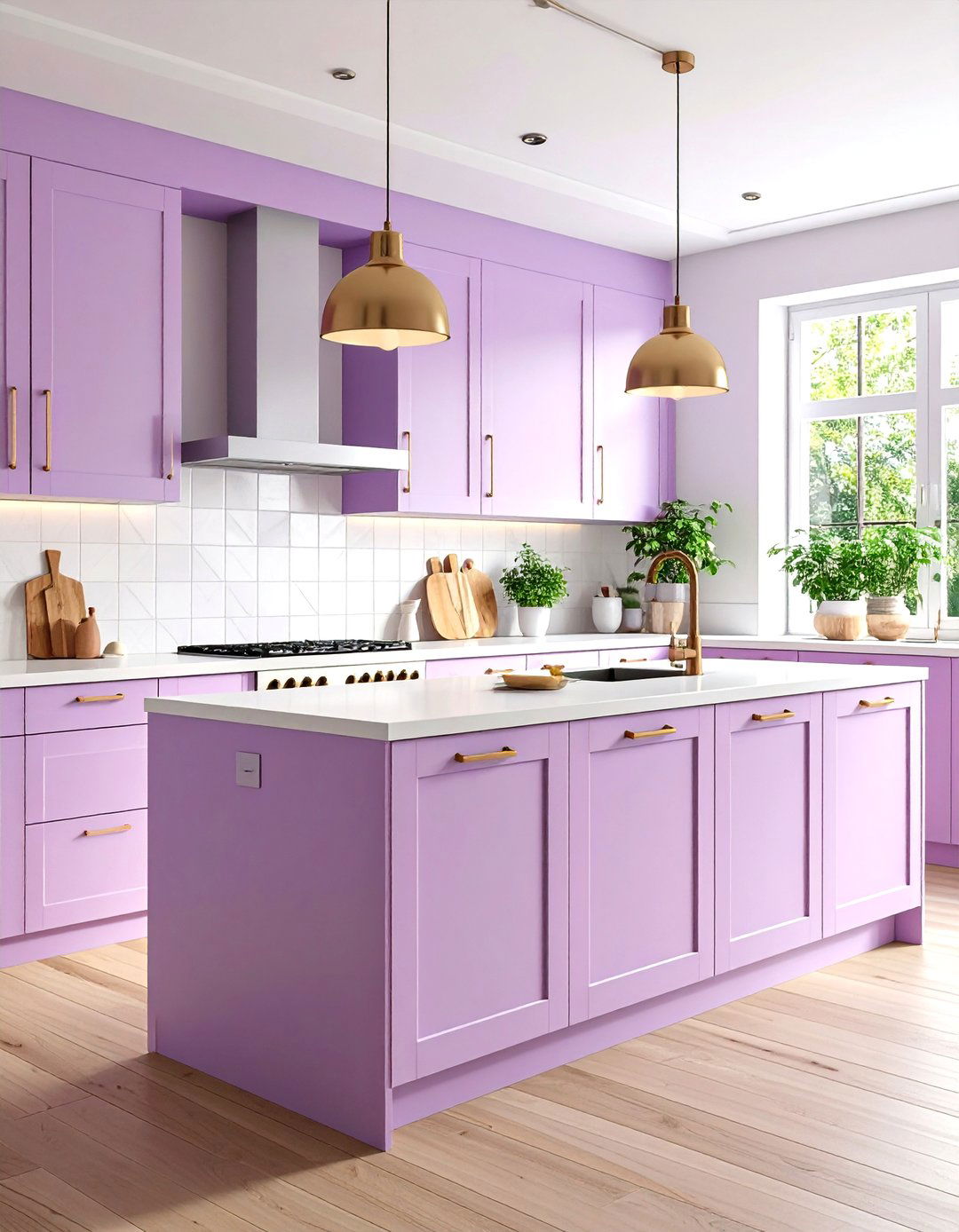
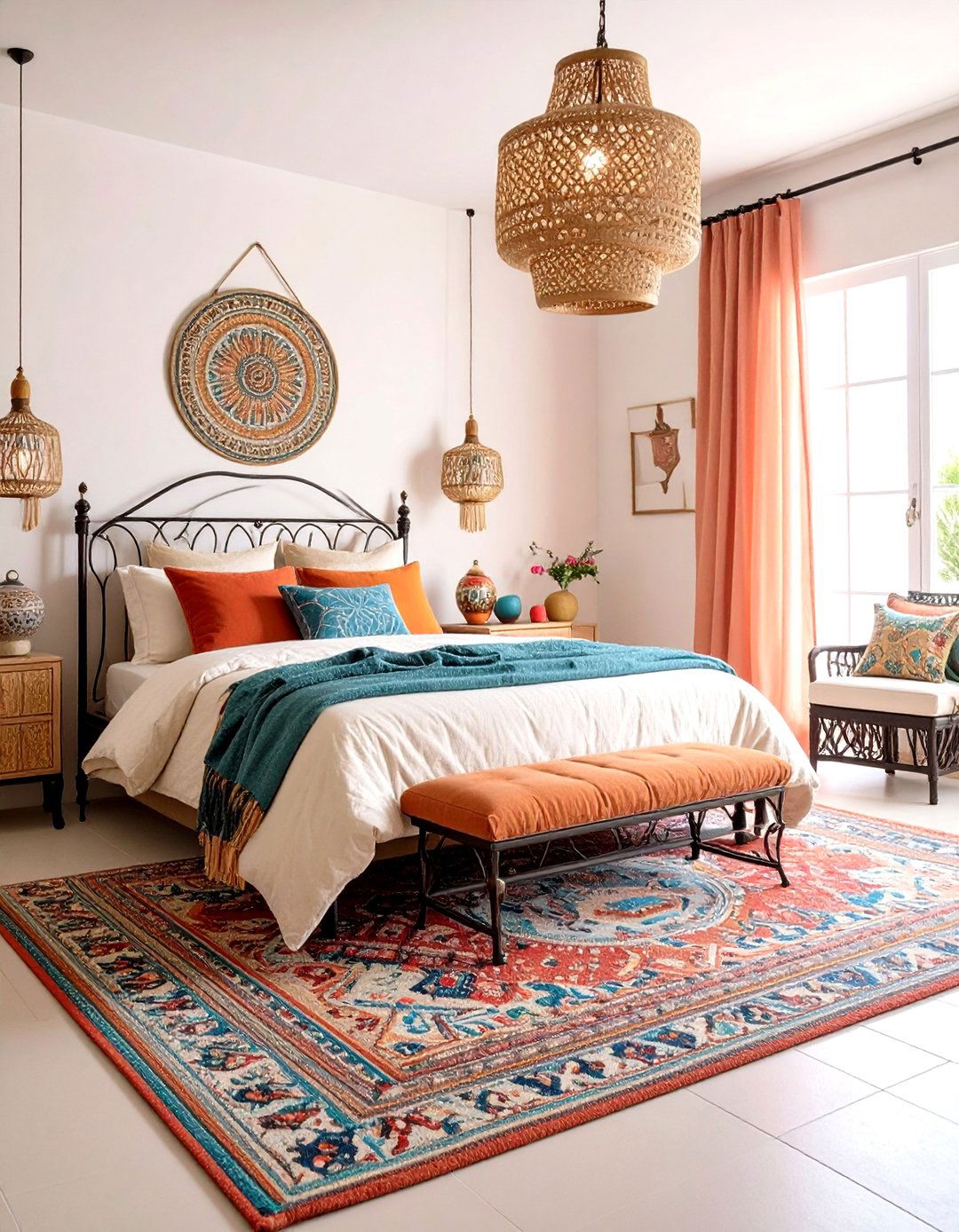
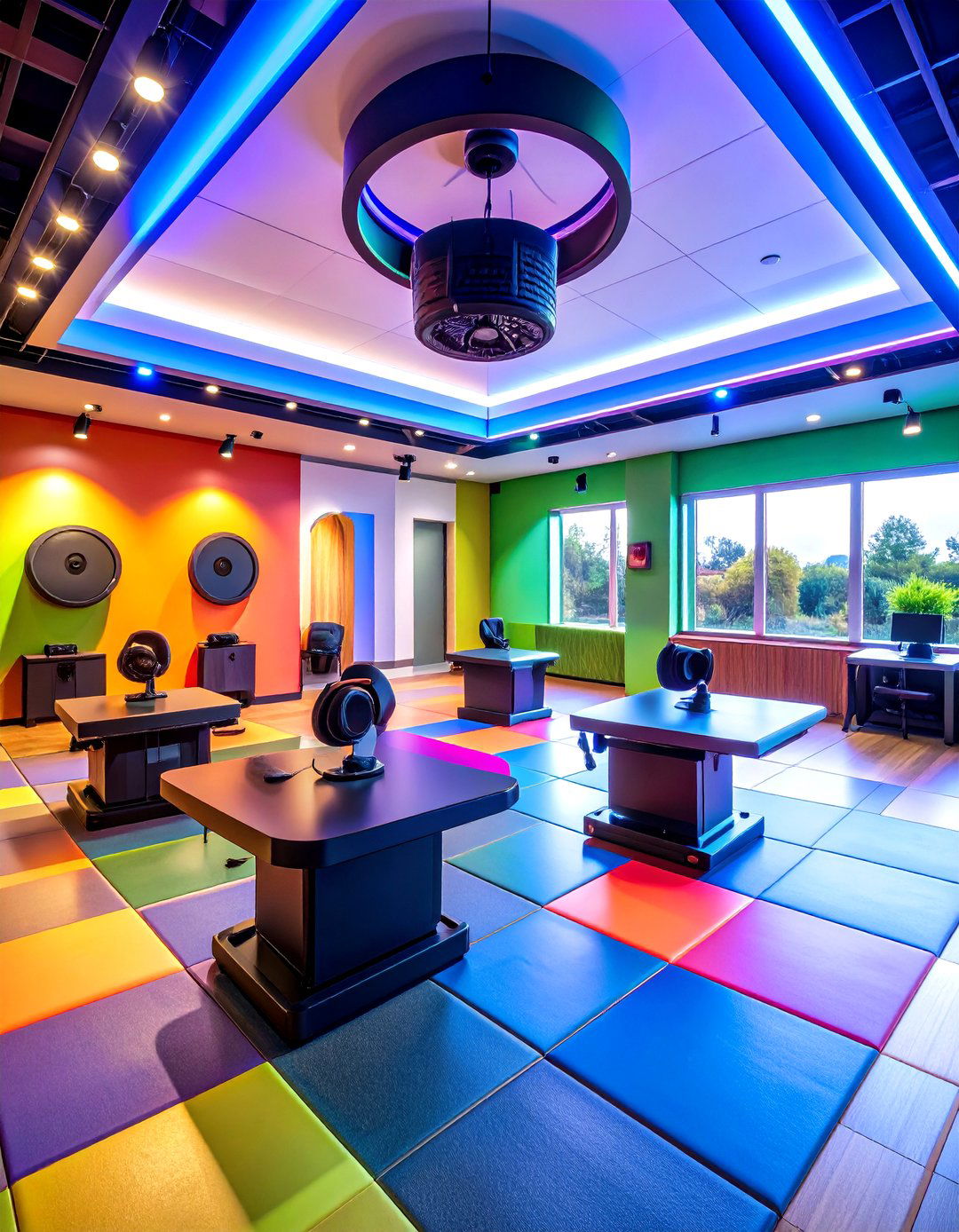
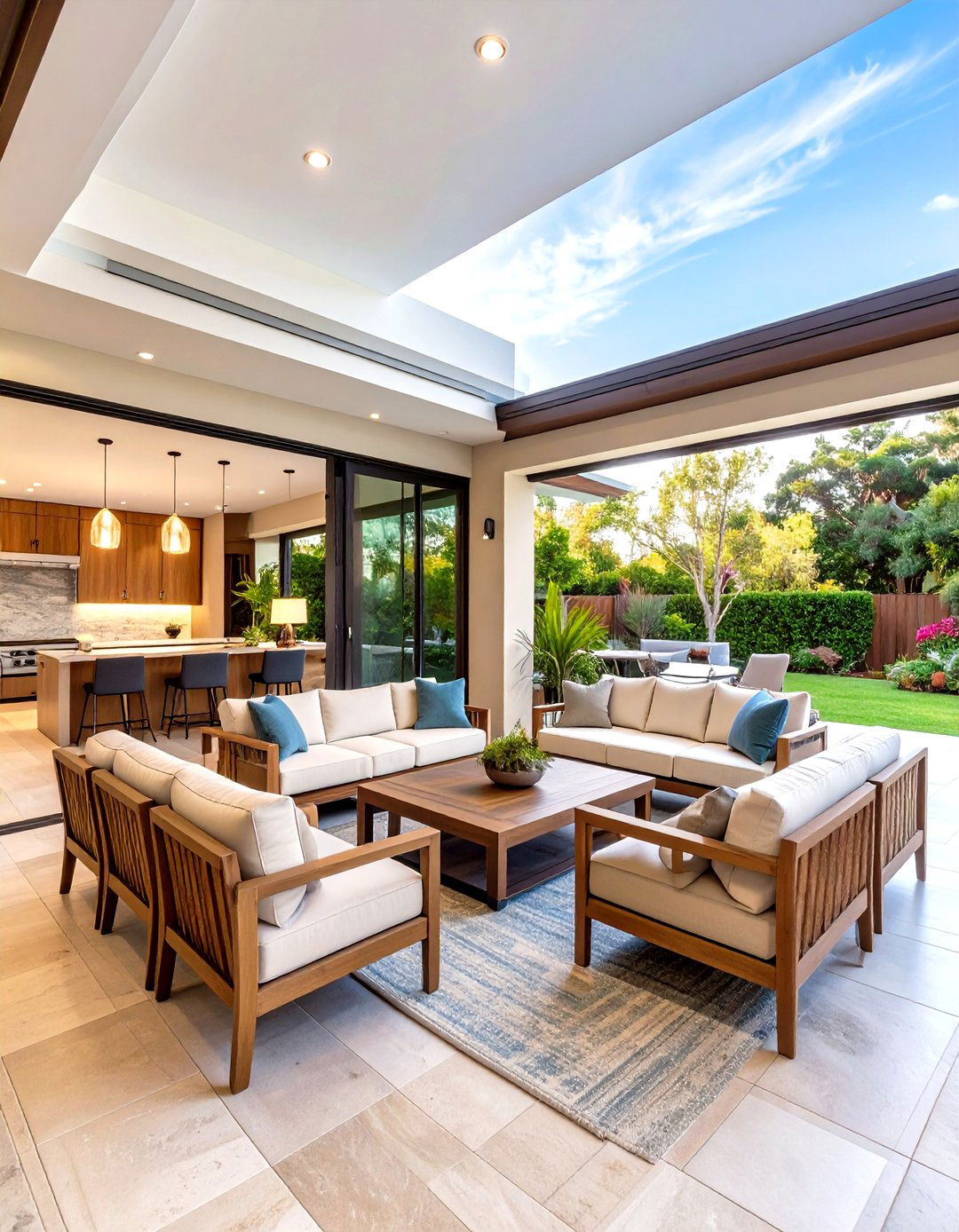
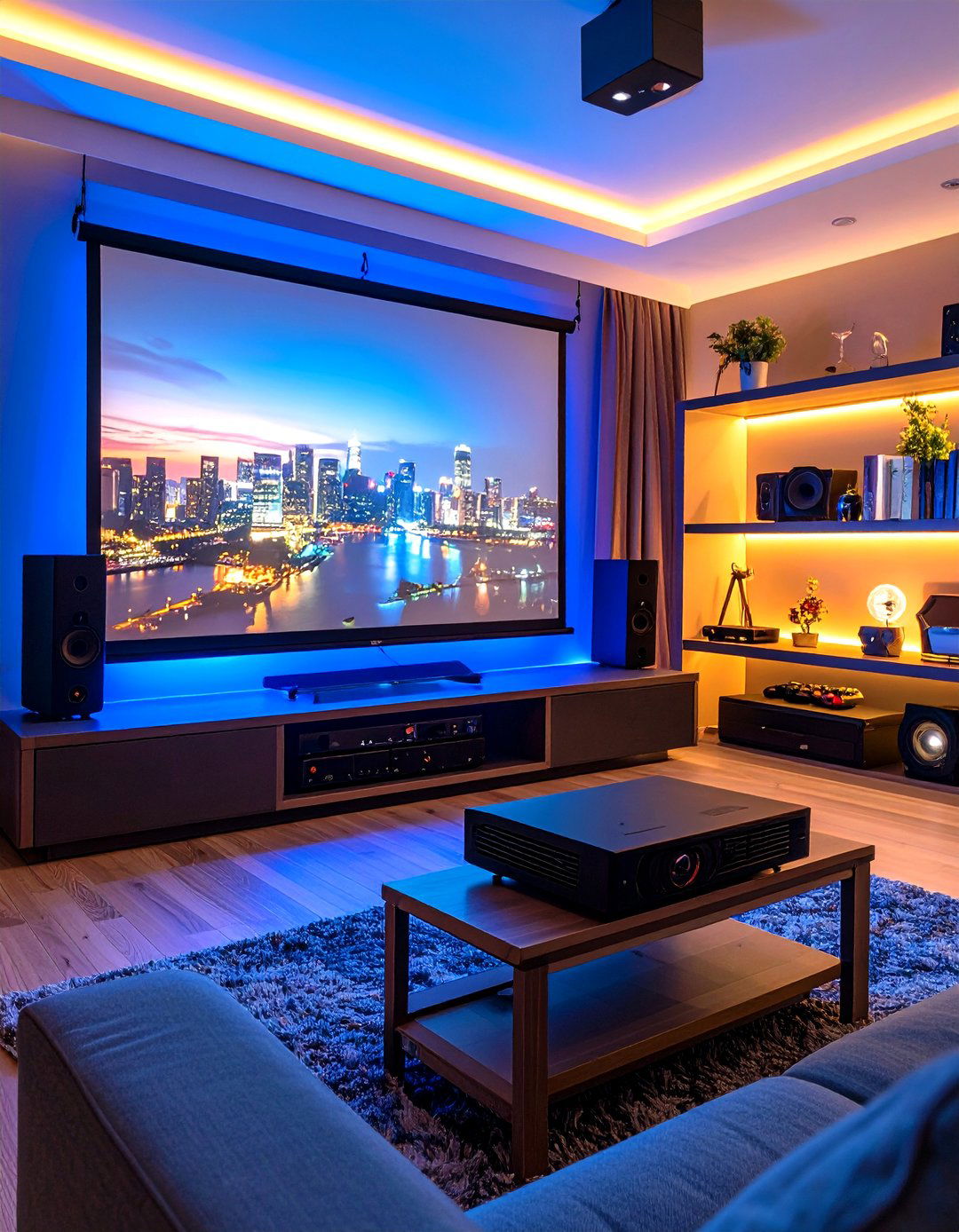

Leave a Reply